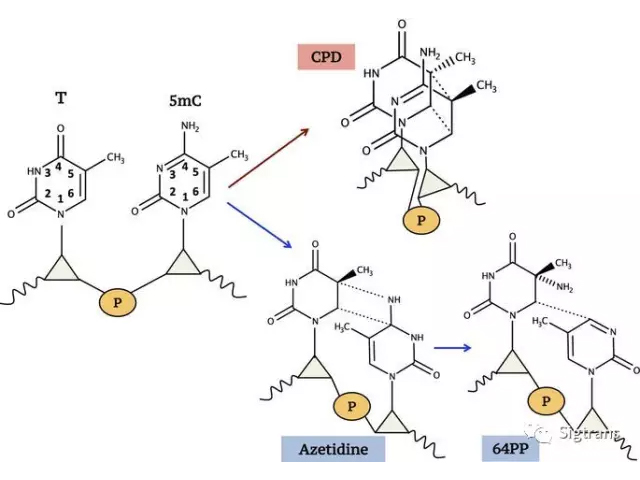

新闻动态
News Center
Professor Roberto Improta of Italy publishes article on UV-induced DNA damage at STTT
- Categories:Industry information
- Author:
- Origin:
- Time of issue:2020-11-05
- Views:0
(Summary description)The team of Professor Roberto Improta of the Italian National Research Council published a prospect in the "Signal Transduction and Targeted Therapy" (STTT) jointly sponsored by Natural Publishing House and the State Key Laboratory of Biotherapy of West China Hospital, Sichuan University, discussing UV-induced DNA damage. Prof. Roberto Improta is the corresponding author of the article, and Dr. Lara Martinez-Fernandez is the first author.
Professor Roberto Improta of Italy publishes article on UV-induced DNA damage at STTT
(Summary description)The team of Professor Roberto Improta of the Italian National Research Council published a prospect in the "Signal Transduction and Targeted Therapy" (STTT) jointly sponsored by Natural Publishing House and the State Key Laboratory of Biotherapy of West China Hospital, Sichuan University, discussing UV-induced DNA damage. Prof. Roberto Improta is the corresponding author of the article, and Dr. Lara Martinez-Fernandez is the first author.
- Categories:Industry information
- Author:
- Origin:
- Time of issue:2020-11-05
- Views:0
The team of Professor Roberto Improta of the Italian National Research Council published a prospect in the "Signal Transduction and Targeted Therapy" (STTT) jointly sponsored by Natural Publishing House and the State Key Laboratory of Biotherapy of West China Hospital, Sichuan University, discussing UV-induced DNA damage. Prof. Roberto Improta is the corresponding author of the article, and Dr. Lara Martinez-Fernandez is the first author.

It has recently entered the summer, and the sun is very bright. Sun exposure can stimulate the body's absorption of vitamin D, but excessive exposure to ultraviolet rays may also cause skin cancer and form skin cancer. In this Perspective, Professor Roberto Improta from the Italian National Research Council describes how UV light affects people's genes.
DNA methylation is one of the most common epigenetic modifications, and abnormal methylation is associated with the occurrence of various tumors, and the reversibility of epigenetic modifications also provides an important opportunity for targeted therapy. Among them, the methylation/demethylation of cytosine plays an important role in epigenetics. In fact, some studies have shown that the methylation of cytosine is related to the occurrence of skin cancer. Methylation of cytosine at position 5 (C5-methylation; Figure 1) plays a regulatory role in various biological processes ranging from cell differentiation to gene expression. Since the degree of methylation changes during the cell cycle, 5-methylcytosine (5mC) is considered the fifth "dynamic" letter of the genetic code. The function of 5mC and related signal transduction may be highly influenced by the chemical alteration of cytosine by ultraviolet (UV) radiation. In contrast to genetic changes, epigenetic modifications are often reversible, opening opportunities for targeted therapy using specific inhibitors. In this regard, 5mC acts as an endogenous mutagen, although it constitutes only up to 5% of the bases in the human genome. The degree of correlation between methylation and cancer depends on the tumor type. In particular, recent studies have shown that about 40% of melanomas are associated with C5 methylation. It is well known that 5mC is a variable site implicated in genetic diseases and tumors as it can spontaneously deaminate thymine.

In this Perspective, Prof. Roberto Improta briefly reviews the physicochemical parameters of the specific UV-induced reactivity of methylated cytosines. The article first introduces the effect of C5 methylation on the static and dynamic properties of the excited state of the 5mC monomer, which may affect its photochemical behavior. Then, followed by a brief discussion of the electronic principles governing the photodimerization reaction, the authors analyze how C5-methylation-induced conformational and electronic modifications affect the studied reactions. Finally, the authors briefly summarize the effect of C5 methylation on DNA photoactivation reactivity and discuss the main points in this field. These findings provide a basis for researchers to understand DNA methylation and develop anticancer drugs based on this mechanism.
In the end, although the sun is beautiful, remember to sunscreen~
references:
(1) Baylin SB, Jones PA. Adecade of exploring the cancer epigenome—biological and translationalimplications. Nat Rev Cancer 2011;11:726–734.
(2) HollidayR, PughJE.DNAmodificationmechanismsandgeneactivityduringdevelopment.Science1975;187:226.
(3) ListerR, EckerJR.Findingthefifthbase:genome-widesequencingofcytosinemethylation.GenomeRes2009;19:959–966.
Scan the QR code to read on your phone
江苏天晟药业股份有限公司
©2022 JIANGSU TIANSHENG PHARMACEUTICAL CO.,LTD. 苏ICP备14003387号


